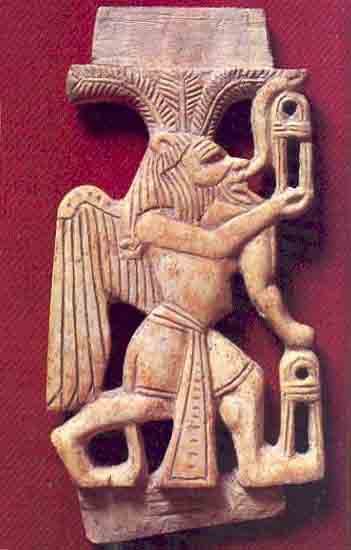Ivory Treasure
Sidebar to: Back to Megiddo

Megiddo’s 20 levels of occupation make the site a trove of archaeological treasure that illuminates the history of the entire ancient Near East. But in addition, the site also contained an actual treasure trove: the famed Megiddo Ivories.
In April 1937, while excavating three cellar rooms of a palace on Megiddo’s northern side, archaeologists discovered a hoard of 382 ivories. They date to the Late Bronze Age (1550–1150 B.C.E.).
The ivories exhibit a range of artistic styles, from incised designs to openwork to carving in low and high relief. The varying styles indicate that the collection contains items from various parts of the Near East, especially Canaan, Egypt, Greece and even Anatolia. The bulk of the hoard falls into three main categories. The first consists of plaques, most likely decorative attachments for furniture or walls. The second group contains cosmetic items—combs, mirror handles, flasks and the like; these were decorated with geometric designs or with scenes from nature or mythology. The last category comprises game boards and pieces.
The objects on these two pages give a good sense of the beauty, variety and workmanship of the Megiddo ivories. At top is a portrait of the Egyptian god Bes, with his characteristically exaggerated tongue. He is shown winged and bearded, wearing a feathered headdress, an Egyptian-style kilt and a floor-length sash. Bes was revered as a guardian against evil spirits. Tenons on the back of this ivory plaque indicate that it was attached to a piece of furniture.
Already a library member? Log in here.
Institution user? Log in with your IP address.

